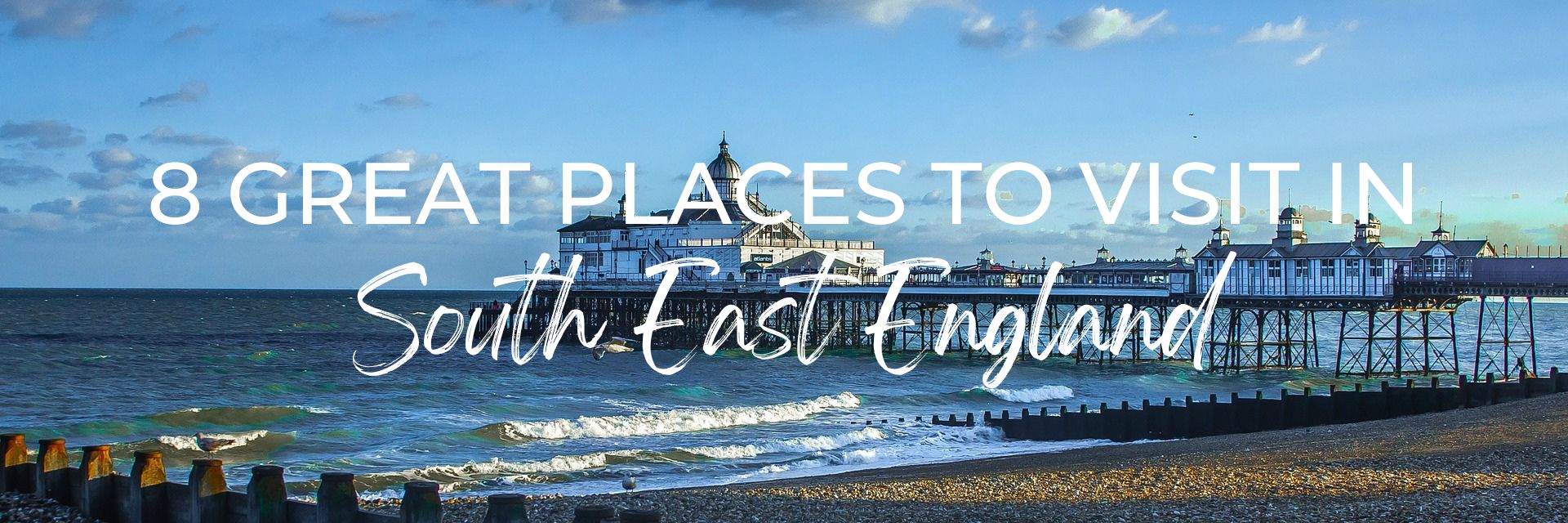
Prepare to embark on an extraordinary journey filled with captivating contrasts and breathtaking landscapes in South East England. Delve into the heart of the region, where the country’s largest city intertwines with the idyllic rolling hills and iconic white cliffs, earning this region its nickname, the “Garden of England.”
Immerse yourself in history as you explore an array of majestic castles, standing proudly as guardians of the nation throughout the ages. Surprisingly, some of these formidable fortresses remained active defences far more recently than one might imagine. Beyond castles, picturesque seaside towns grace the coastline, their charming piers extending into the glistening sea, inviting you to partake in traditional seaside delights.
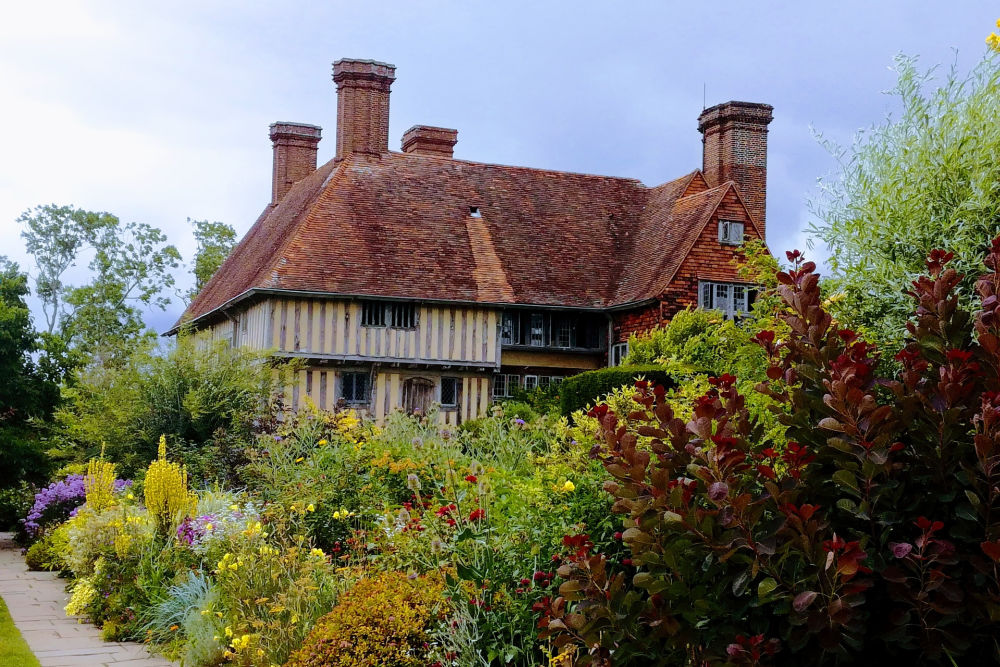
Although London dominates the scene, you’ll soon discover that the true essence of South East England lies just beyond the city’s boundaries. Venture a short distance from the bustling capital, and you’ll find yourself amidst the rolling countryside. Perhaps to visit one of the eight UNESCO sites that are within easy reach of the capital? Whatever you decide to do there is plenty to enjoy.
Whether you plan a weekend getaway, a week-long escape, or an extended adventure, we’ve curated a list of eight exceptional destinations in South East England. These recommendations stem from our personal experiences and insights shared by fellow travel bloggers. Get ready to uncover the very best the region has to offer, as we guide you through these incredible locales.
This post may contain affiliate links. Please read our full disclosure policy here.
TABLE OF CONTENTS
8 Great Places to Visit in South East England
Brighton, a seaside resort on the south coast of England, is a popular holiday destination, only an hour away by train from London making it a great day trip destination for Londoners. It was this excellent train line to the capital that turned a small seaside town patronized by the Prince Regent in the early 1800s into one of the most popular Victorian/Edwardian seaside resorts within a hundred years.
Brighton is an interesting mix of the old and the new: a product of the Victorian and Edwardian ages, but also one of the most forward-looking and hippest places in England. Its Victorian terraces and lanes now house quirky cafes and independent boutiques, and there’s a flourishing art and music scene.
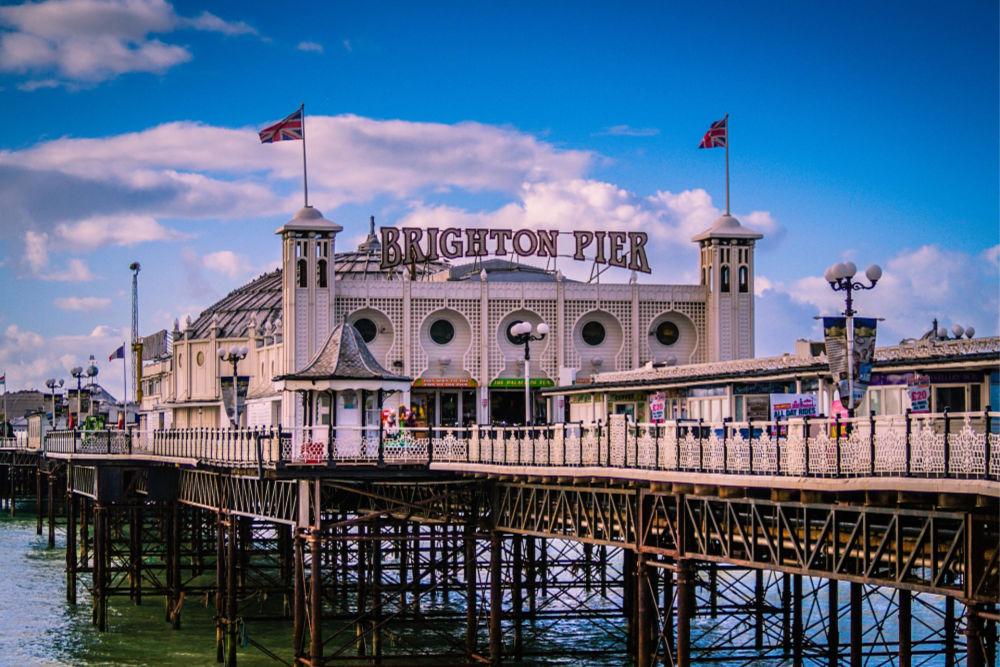
MUST DO IN BRIGHTON:
- Brighton Pier: Brighton Pier was built in 1899 and remains one of the finest examples of a Victorian seaside pier in England. These piers were built as entertainment venues, and Brighton Pier doesn’t disappoint, with its roller coaster, amusement arcades and fairground-like stalls.
- The Lanes: The aforementioned hipster shops and cafes are mainly concentrated in a series of winding alleyways called The Lanes. If you love shopping you’ll love exploring the little boutique clothes and jewellery shops, and then relaxing over a cup of coffee. Our favourite Lanes place is the amazingly named Choccywoccydoodah, a chocolate shop that’s a chocoholic’s dream. (Sadly Choccywoccydoodah has since ceased trading.)
- Royal Pavilion: Looking like a Maharaj Palace, rather than the former home of the Prince Regent in the early 19th century, the Royal Pavilion is now a popular tourist destination owned by the City Of Brighton. 400,000 visitors a year walk through its doors to see just how the famously exuberant Prince George lived and holidayed.
Contribution from Chris of England Explore
Referred to by locals as Hampstead Village, this sweet spot is located 4 miles northwest of London and is actually part of London’s Camden borough.
Home to intellectuals and artists galore, it is said to also be home to more millionaires than anywhere else in the U.K.
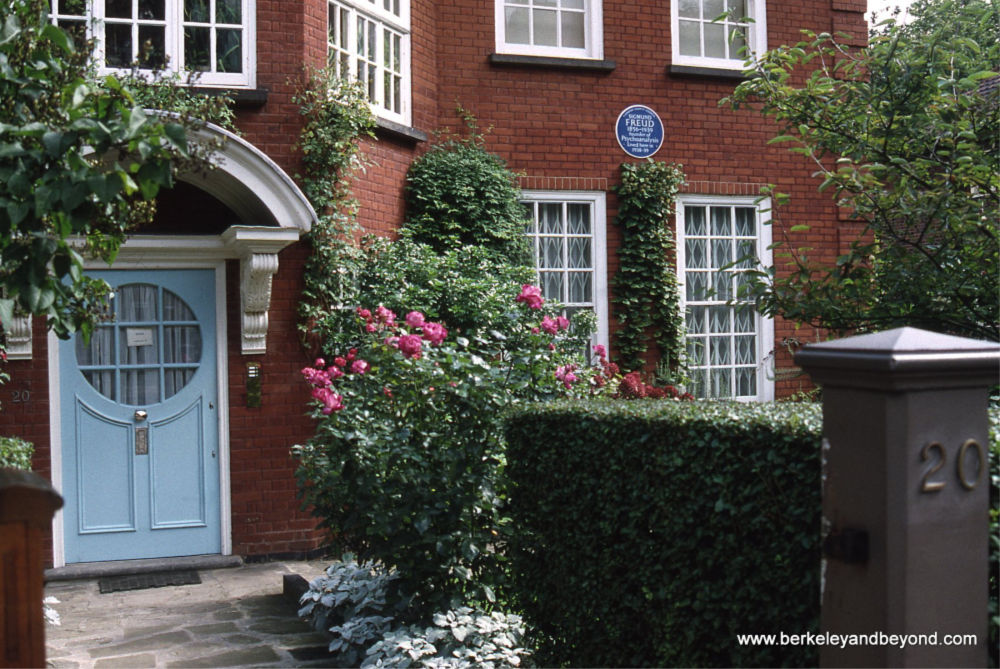
MUST DO IN HAMPSTEAD:
- Hampstead Heath: This large, hilly expanse of parkland is a popular spot for Londoners to take a long walk and commune with nature, and it has a well-known view of the London skyline from Parliament Hill. Three open-air public swimming ponds are also quite popular–one is for men, one for women, and one for mixed bathing.
- Kenwood House: Works by Rembrandt, Turner, Gainsborough, Reynolds, and Vermeer hang on the walls of this stately home. Outside on the picturesque estate grounds, sculptures by Henry Moore and Hepworth are also displayed. Open-air concerts on summer Saturday evenings are conducted on the slopes below.
- Freud Museum: After he and his family left Nazi-occupied Vienna as refugees, Sigmund Freud lived, worked, and died in this spacious three-story house. Rooms with original furniture, letters, photographs, paintings, and personal effects may be viewed. In the study and library, you can view the famous couch and Freud’s large collection of Egyptian, Roman, and Asian antiquities.
Contribution from Carole of Travels With Carole
The beautiful and historic town of Windsor boasts the royal residence of the Queen, charming countryside and a bustling centre with boutique shops and quaint restaurants. The River Thames also quietly runs through Windsor, connecting it to the small yet famous town of Eton (yes, home of the renowned college but more importantly, Eton Mess!)
Windsor is not a large town, but it attracts visitors year after year due to its history and vibrant yet peaceful nature. Being only 20 miles from London, it makes for a great escape from the big city. Windsor is the perfect place to visit if you are looking for typical English charm, and an opportunity to feel like a local. Being a small town, you could spend a long weekend there and get to know the area really well, indulging in the local bakeries, pubs and even a spot of history. After all, this is where Henry VIII is buried, close to where the Magna Carta was signed and more recently where Prince Harry married Meghan Markle!
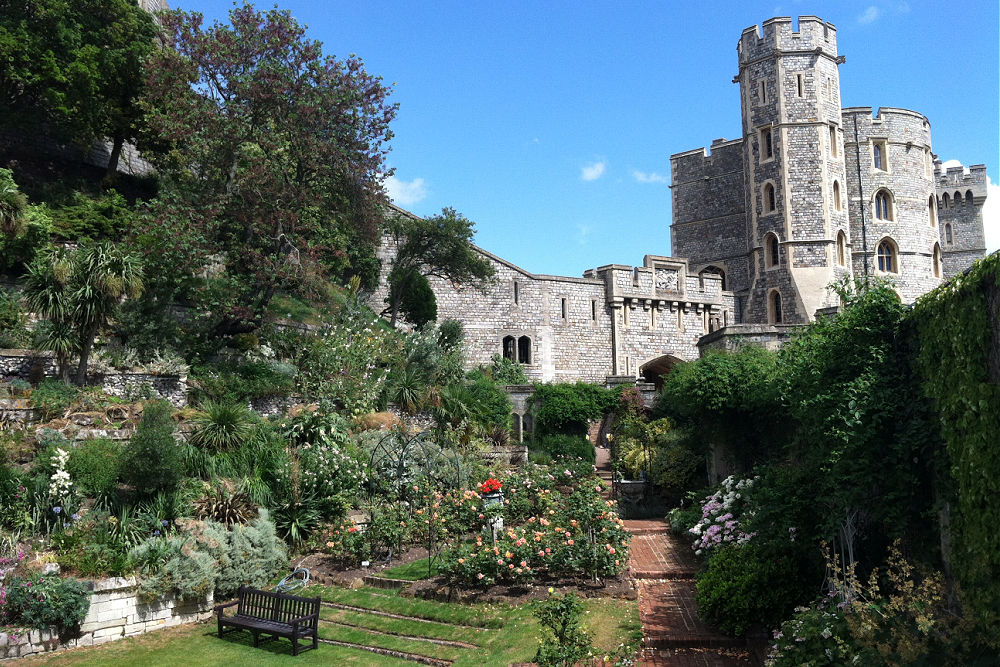
MUST DO IN WINDSOR:
- Visit the Castle: The oldest and largest inhabited castle in the world, touring Windsor Castle is a must-do for anyone visiting England, especially if you’re in the town already! Explore St. George’s Chapel, watch the Changing of the Guard, and be wowed by the State Apartments. Windsor Castle really is a striking building, with so much to share
- Afternoon Tea: Choose a cute tearoom to enjoy fluffy scones, sweet jam, and decadent clotted cream, along with a pot of perfectly brewed English Breakfast tea. Add a glass of champagne too if you’re feeling fancy – you are in the vicinity of royals, after all! Remember that most tearooms and cafes will stop serving their afternoon tea at around 3 or 4 pm so don’t miss out!
- River Cruise on the Thames: What better way to wind down after a busy day of sightseeing than to cruise along the River Thames, and enjoy a five-course meal whilst listening to some easy-going jazz music? Take in the views of Windsor at night-time and then take a visit to some of the friendly local bars for a nightcap.
Contribution from Jade of Two Tall Travellers
Famed as one of the UK’s most historic cities, Canterbury was made famous by Thomas Becket, the old Archbishop, who installed a lot of religious significance in the city during 1162-1170 – when he was murdered in Canterbury Cathedral.
This site is one of the three UNESCO world heritage sites in the city: the others being St Augustine’s Abbey and St Martin’s Church. After Becket’s murder, the city was the main place of religious pilgrimage in the UK. It was the starting point of the Via Francigena route, which spans through France and ends in Northern Italy.
Canterbury also boasts an impressive amount of medieval and modern history. Chaucer famously wrote about the city in Canterbury Tales, one of the finest examples of classic British literature. The city was bombed ruthlessly in World War II – it was chosen as a target because of its beauty – yet fortunately managed to rebuild itself.
Canterbury is a university town, so alongside historic pubs, it contains bars and clubs housed in archaic buildings. There are also lots of vintage shops and great restaurants. As it is a small city, it is a feasible day trip from London even for skint backpackers – tickets on the 007 bus (yes, that’s named after James Bond, whose author heralds from near Canterbury) are very reasonably priced, especially if bought in advance.
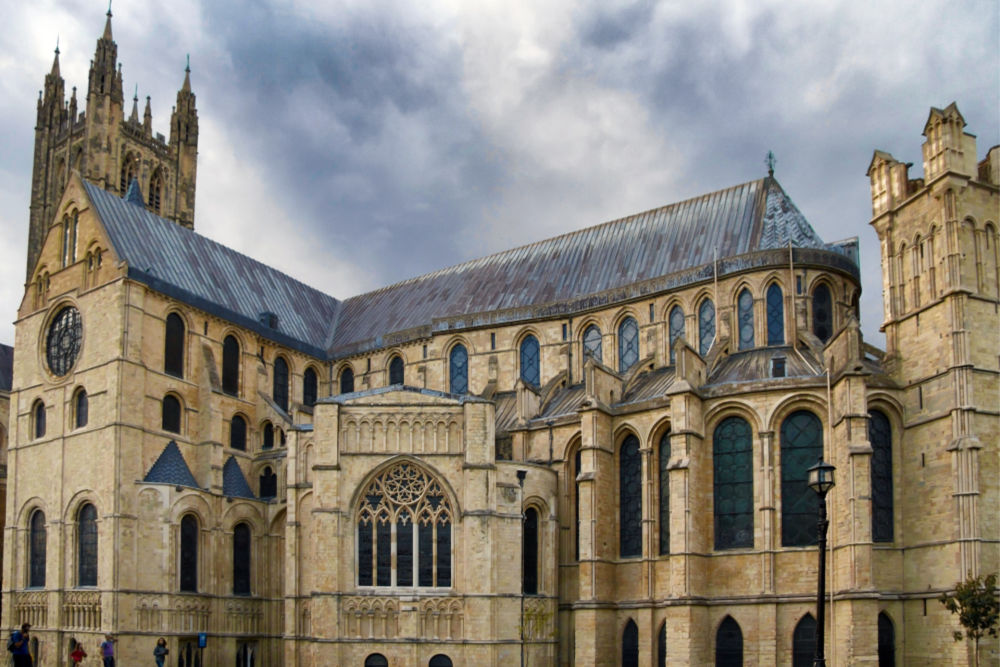
MUST DO IN CANTERBURY:
- Canterbury Cathedral: With a history spanning back a whopping 1400 years, Canterbury Cathedral is home to the shrine of Thomas Becket, beautiful stained glass windows, and many other notable features. An audio tour will describe how pivotal this house of worship has been in shaping European religion over the centuries.
- Canterbury Tales: This experience will take you right back to Chaucer’s Canterbury, where pilgrimages travelled from London to Canterbury to see Tomas Becket’s shrine. It is an interactive experience with characters and an audio guide that takes you right back to the medieval era. (Update: As of August 2020, Canterbury Tales has permanently closed)
- St. Augustine’s Abbey: Originally built in AD 597 as a place for Anglo-Saxon kings to be buried, the abbey is home to ruins and a museum.
Contribution from Claire of Claire’s Footsteps
Rye in East Sussex nestles between the green rolling hills of the South Downs and the waters of the English Channel. You’ll find steep cobbled streets lined with historic half-timbered buildings, ancient inns and a tiny castle.
Today Rye sits two miles away from the coast but years ago, before the river silted up, the town used to sit on the shoreline. Rye is a charming and perfectly preserved medieval English town with beach walks at Camber and Rye Harbour Nature Reserve nearby.
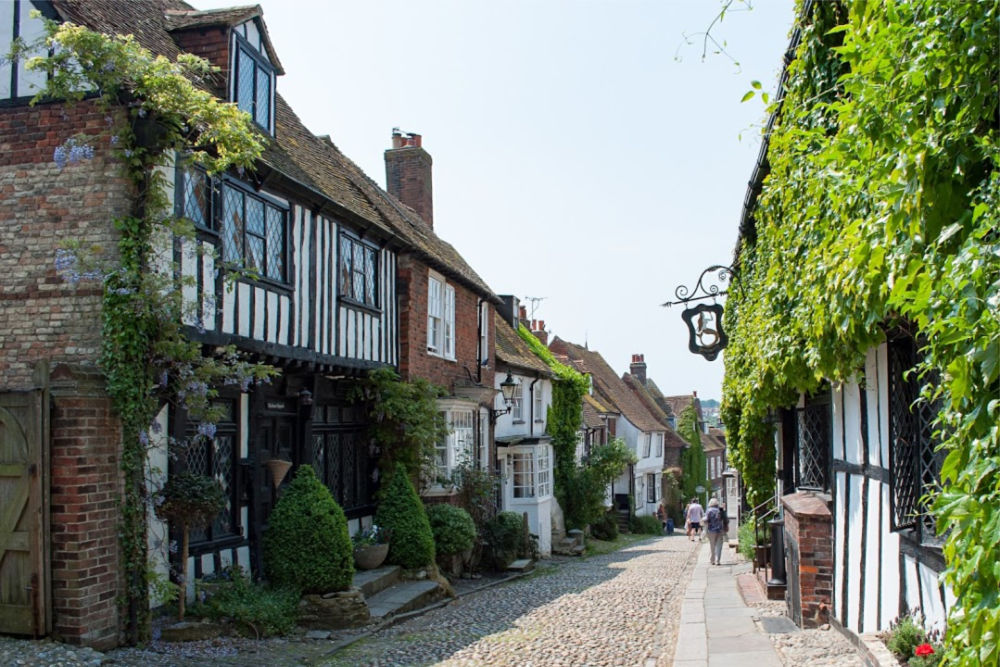
MUST DO IN RYE:
- Explore the Town: Rye is a small town and easy to explore on foot. Starting at the old Landgate explore the steep cobbled lanes that lead off the High Street. Make sure you don’t miss Mermaid Street said to be one of Britain’s most picturesque streets. Stop by the 11th-century Mermaid Inn for a drink and check the Giant’s Fireplace Bar to see if you can discover the entrance to the secret passage that smugglers once escaped into
- Ypres Tower: The tower is in the heart of the town and home to Rye Castle Museum where you’ll discover all about the town’s history. In the past, it’s been a home, a prison and even a mortuary. From the rooftop terrace, you can take in the views over the old harbour and the estuary of the River Rother.
- Rye Harbour Nature Reserve: Rye Harbour runs alongside the river Rother and the nature reserve is just a few minutes walk from there. Over 280 species of bird have been recorded in this beautiful conservation area. A trail of pathways leads past freshwater gravel pits, lagoons and salt marsh habitat and hides are available for wildlife watching. Keep an eye out for ‘Little Red’ an iconic hut that has been on the site since 1904.
Contribution from Suzanne of Sussex Bloggers
Eastbourne, located in East Sussex on the south coast of England had its heyday as a Victorian seaside resort.
The city is well known for its Victorian architecture dating from that period. An easy two-hour drive from London, Eastbourne does feel a world away. Although it has slightly less than 100,000 people, Eastbourne still has a small-town feeling. It is located on the edge of the South Downs National Park which has hundreds of acres of rolling hills, farmland and cliff walks.
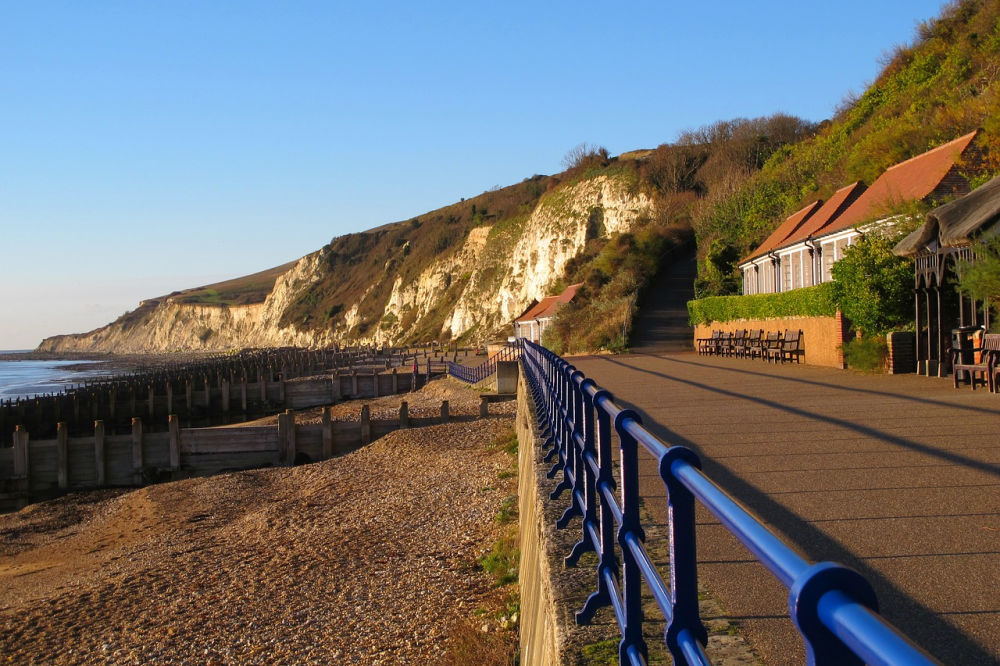
MUST DO IN EASTBOURNE:
- Eastbourne Pier: Although the original Victorian pier from 1870 has long been lost to the ravages of time, Eastbourne Pier is still a fun place to visit. You get children’s attractions, bars, restaurants, and, of course, that quintessential British seaside food, fish, and chips. The Pier is a prime spot to watch the Eastbourne Air Show that is held every summer – Airbourne.
- Eastbourne Beach: You can’t have a seaside town without a beach! Pebble Beach is a gathering point on a good day for people hanging out in the sunshine. A promenade along the beachfront is great for cycling or walking the dog. The city of Eastbourne has several modern architecture-inspired beach huts on Eastbourne Beach now that you can rent if you need some respite from the British summer!
- Marine Parade: Marine Parade runs alongside Eastbourne Beach and has many gracious period buildings dating back to the early 19th century. These buildings are now hotels, pubs, and restaurants.
Contribution from Shobha of Just Go Places
READ MORE: Check out these other23 amazing day trip ideas from London!
A favourite of Charles Dickens who owned the nearby Gads Hill Place, Rochester has been an important city (now a town) for centuries. Significant growth in the medieval period led to the construction of the cathedral and two castles to defend the Medway crossing and the realm.
The town centre boasts many buildings that have survived the centuries. Indeed you can see some buildings much as Dickens would have seen them even to this day. The town appeared in works such as Pickwick Papers and Great Expectations.
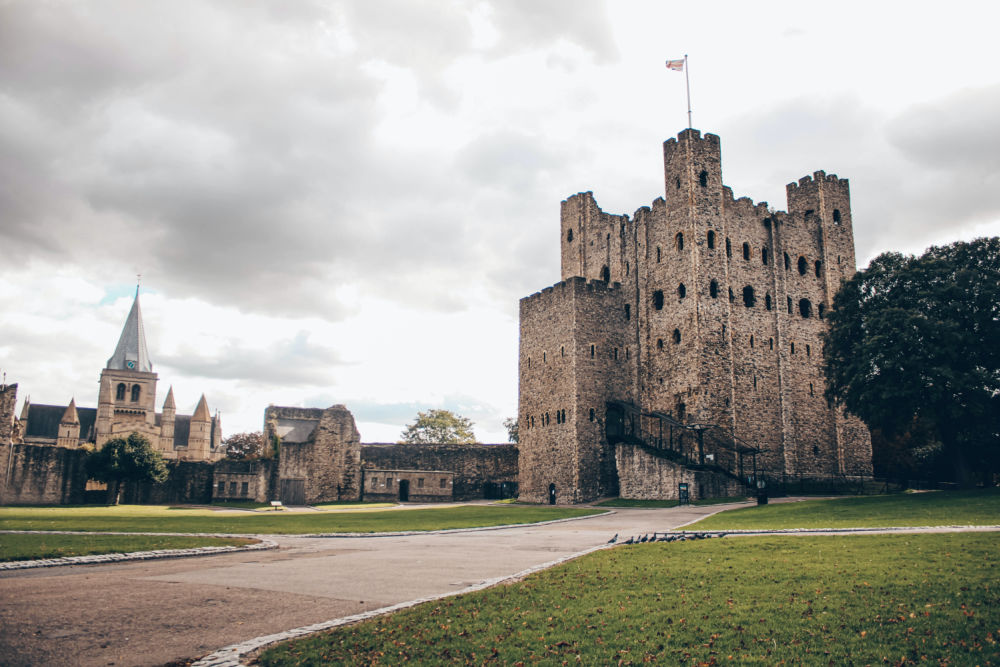
MUST DO IN ROCHESTER:
- Restoration House: Formed by the joining of two medieval buildings around the turn of the 17th-century, the Restoration House became a city mansion. Featured as Miss Havisham’s home in Charles Dickens’ Great Expectations, you can now explore the house and garden which has been restored to its former glory.
- Rochester Castle: Built to guard a key crossing of the River Medway, Rochester Castle has stood in the town for over 900 years. Its Norman keep dates from 1127 and the castle endured a major siege in 1215, the year of the Magna Carta. The round tower at the southern corner was built to repair the damage done during the siege.
- Walking Tour: A great way to see and learn about the city is to join the City of Rochester Society’s free 90-minute walk. If you can’t make the guided tours, then you can do a self-guided version. On the tour, you’ll see some of the buildings that inspired Charles Dickens, several churches, Rochester castle, and much more.
Sitting on a foundation of chalk, like much of southern England, Dover has always had an important role in the county’s defences due to its strategic position and large natural harbour.
For centuries it fended off intruders from mainland Europe, but today its proximity to the continent makes Dover the leading port for cross-channel travel where daily ferries, hydrofoils, and hovercrafts shuttle people and goods across the Channel.
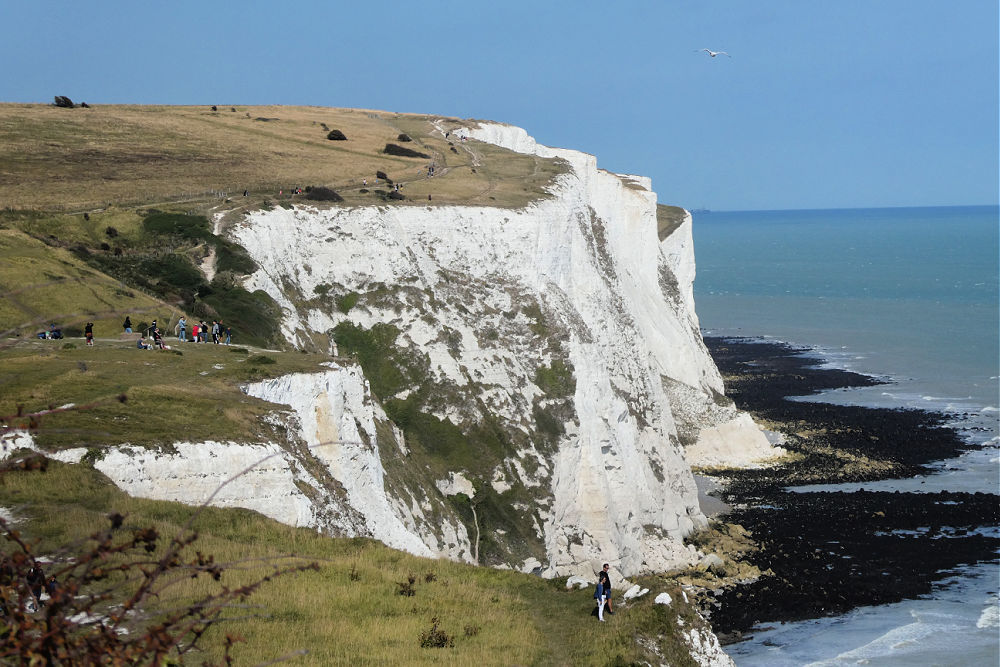
MUST DO IN DOVER:
- Explore Dover Castle and its Secret Wartime Tunnels: Built on the original site of an ancient Saxon fortification, Dover Castle is perfectly positioned on the top of the high cliffs to defend the town – which it has been doing since 1198 when Henry II built the keep, right up to WWII when it was used as a command post for the Dunkirk evacuation.
Allow yourself 4-5 hours to explore the castle and the wartime tunnels which are superbly executed; especially if you’d like to have lunch or afternoon tea (or both!) at the castle – both of which are reasonably priced and delicious! - Gaze at the famous White Cliffs of Dover: Synonymous with England and the romantic subject of artists, poets, and writers, the cliffs gleam against the sea as they look towards France just 21 m (34 km) away.
Visitors can walk along the edge – just be careful! It’s recommended to stay at least 20 feet back from the edge because the same erosion that keeps the chalk-white could also cause the ground to give way underfoot.
The best places to view the cliffs are Samphire Hoe, St. Margaret’s Bay, the Prince of Wales Pier, East Coast and Warren Country Park, or to take a “sea safari” boat ride. - Discover Roman ruins: Along with the Roman lighthouse that adjoins than Anglo-Saxon church inside the Dover Castle walls, you can also visit the Roman-painted house. Believed to have been a hotel, the remains of this almost 2,000-year-old structure include Roman wall paintings (mostly dedicated to Bacchus the god of revelry) and the remnants of an ingenious heating system.
As our journey through South East England comes to a close, we hope you’re brimming with excitement to explore the captivating contrasts and awe-inspiring landscapes that await you in this remarkable region. From the country’s largest city to rolling hills, iconic white cliffs, the grandeur of majestic castles and the allure of picturesque seaside towns, South East England promises an unforgettable experience.
Now that you’ve glimpsed the essence of this enchanting destination, it’s time to take action. Seize the opportunity to venture beyond London’s bustling streets and uncover the hidden gems that lie just a short distance away.
So, pack your bags, embrace the spirit of adventure, and let South East England weave its magic on you. Uncover its hidden treasures, immerse yourself in its history, and surrender to the breathtaking beauty that surrounds you. The time has come to make memories and embrace the allure of South East England. Your journey awaits and we know you won’t be disappointed!
Looking for more information to plan your visit to England? You may find these articles helpful.
RESOURCES | PLAN YOUR TRIP TO ENGLAND
To book flights, rental cars, accommodations, and activities for your trip, please check out our recommended travel providers, favourite apps and websites.
- For more great weekend ideas around England and the rest of Britain, check out one of my favourites – 52 Great British Weekends: A Seasonal Guide to Britain’s Best Breaks
- For weekend ideas in London – The Weekend Starts Here: Fifty-Two Weekends of Things to See and Do – will give you lots of ideas!
- For all things England, you can’t go wrong with Rick Steves! Check out his England travel guide, full episodes of his TV show, or download his app for excellent audio tours.
Some of the links in the post above are affiliate links. This means if you click on the link and purchase the item, we will receive an affiliate commission but this does not affect the price to you. Please read our full disclosure policy here.
